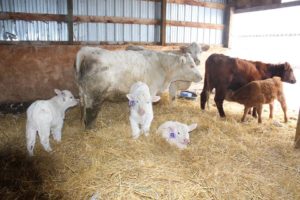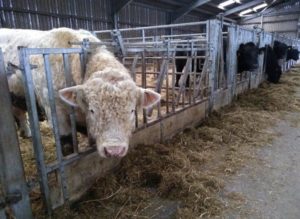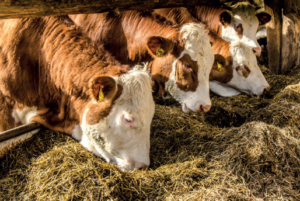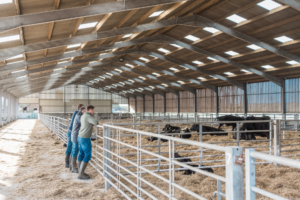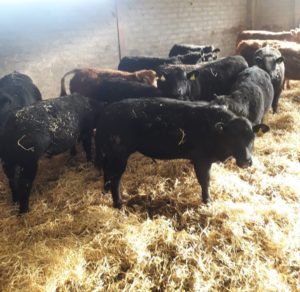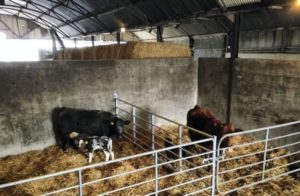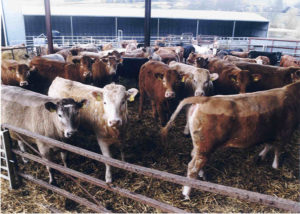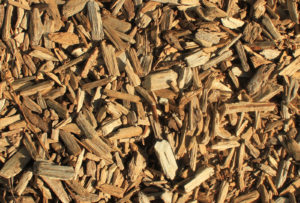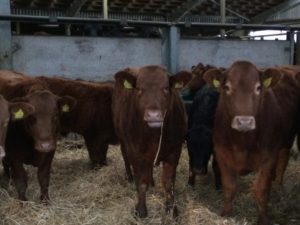Housing & Handling
Housing for cattle in Scotland is often required to provide livestock with protection from extreme weather and to reduce damage to pastures from out wintering. Design of livestock buildings should firstly support good health and welfare for the cattle. They should be designed to facilitate efficient management, be operated safely and with least stress on the animals. The design should aim to minimise pollution risk and visual impact on the surrounding environment.
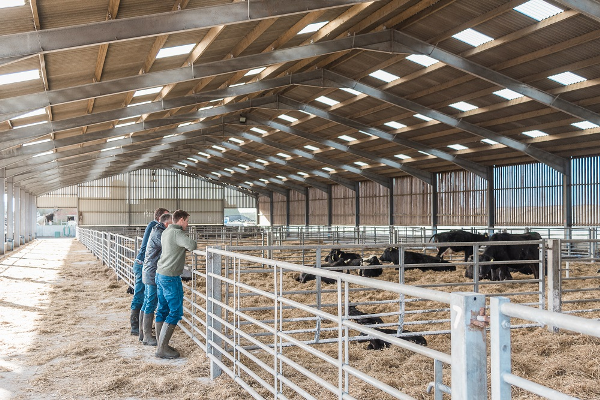
Preparations Ahead of Housing
Farmer focus has now turned to housing for the upcoming winter months. Here are a few key points when it comes to winter housing Read more>>
Preparing for Winter Housing
Housing cattle ahead of winter is an important event in the farming calendar, and a smooth transition will ensure a healthy and productive winter. Read our guide on how to prepare for winter housing, from ventilation to bedding choice. Read more>>
Mineral Requirements in Housed Cattle
Minerals are vital for the cow to function as they are important in several processes within the body which support health and performance. Minerals are required at every stage of life, whether it is growth during youngstock, fertility in heifers and cows, milk production or growth of a foetus during pregnancy. It is important to get the optimum mineral status correct for the cow to be as productive and healthy as possible. Read more >>
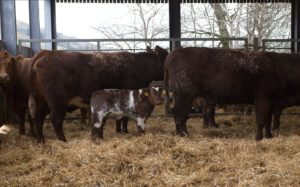
Parasite Control at Winter Housing
The unseasonal autumnal weather in October and record high temperatures at the start of November across the country have allowed farmers to delay housing of stock. However, with a recent change in the weather and flooding in some areas, many animals are now coming inside for the winter. Read more >>
Beef Cattle Housing Guide
Housing for cattle in the Scottish climate is required to provide stock with protection against extreme weather and to reduce damage to pastures from out-wintering. Design of livestock buildings should firstly support good health and welfare for the stock. They should be designed to facilitate efficient management, be operated safely and with least stress on the animals. The design should also aim to minimise pollution risk and visual impact on the surrounding environment. Read more>>
Managing and Reducing Straw Usage
With straw looking to be relatively scarce coupled with price variance across the regions this guide will help farmers better manage straw supplies and help make use of it for bedding. Read more>>
Safety With Calving Pens
We all know cows are becoming bigger, more excitable and unfortunately more aggressive. This is particularly true in the first few days post calving ie when we are using calving pens. Read more>>
Safety In Lage Pens Of Cattle
I was recently asked to visit a farm to discuss the safety of staff when working in large pens of cattle. The shed used to be a cubicle shed but had been converted to 3 large, oblong straw bedded pens with access to feed troughs across one of the short ends. The pens were approximately twice as long as they were wide, with each holding around 50 pregnant cows. Read more>>
Alternative Bedding Materials
Bedding livestock on straw is for most farmers the usual practice. However in recent years straw availability, the quality and the high costs associated with the obtainability of straw have seen a rise in alternative bedding materials used by producers. Livestock will freely lie on a comfortable and dry bed. A dry bed reduces humidity and will result in less contact for the animal with dung and urine, with a subsequent reduction in the risk of disease. Read more>>
Technical Note - Cattle Housing Ventilation
To ensure that good health and maximum performance is obtained from housed livestock the provision of effective ventilation is crucial. In cattle buildings it is usual to rely on natural ventilation to create the required internal climatic conditions. This technical note deals specifically with the design of natural ventilation systems to achieve optimal climatic conditions within cattle housing. Read more>>
Sign up to the FAS newsletter
Receive updates on news, events and publications from Scotland’s Farm Advisory Service

